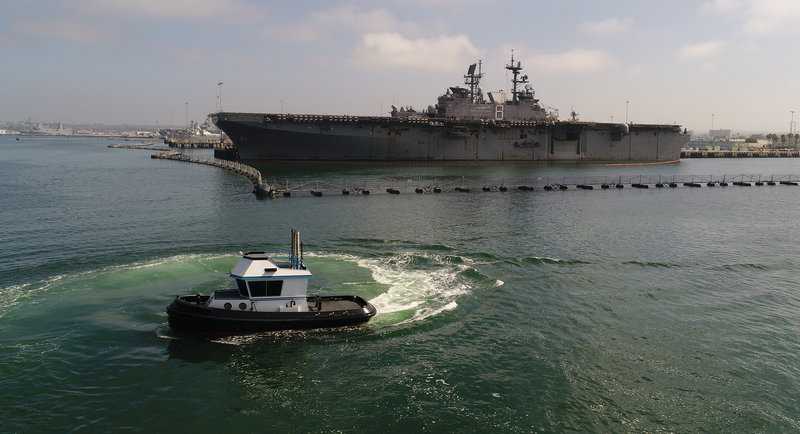Marine Group Boat Works has completed the new 38'x15'x5'6" yard tug Blue Fin for General Dynamics’ NASSCO San Diego shipyard at its solar-powered construction facility in National City, Calif. In addition to moving other vessels, the new tug is responsible for deploying pollution containment booms. Work in the often-tight corners of a shipyard requires excellent visibility, so the designers have given the pilothouse a 300° unobstructed line of sight. In addition, a flying bridge, complete with communication and control consoles, is an integral part of the wheelhouse.
Shipyards, especially those that repair and construct larger vessels such as the case at NASSCO, invariably need to move the vessels, materials and other resources about the yard. To do this, yards often have a small yard-tug that can maneuver in and around yard structures for repositioning hulls into drydocks or controlling newly launched vessels.
When the time came to replace NASSCO’s current yard tug, NASSCO management approached Seattle’s Jensen Maritime Consultants, through Marine Group Boat Works. NASSCO officials had a vessel designed specifically for shipyard work, robust enough to endure long hours each day while minimizing the resources needed to operate and maintain it. The resulting tug is a compact, steel-hulled boat that can be operated by a single person.
For pulling power, the tug has a pair of Cummins QSL9M Tier 3 engines each producing 410 hp. The engines turn 38"x26" 4-bladed, bronze, workhorse-style props on 3" Aquamet 22 shafts. Each engine is linked to the shafts with a ZF325-1 gear with 2.97:1 ratios.
The combined 820-hp Cummins propulsion gives the tug a speed of 9 to 11 knots. It also delivers between 18,000 and 20,000-lbs. of bollard pull. On-deck tow bitts are mounted fore and aft to exercise the pulls.
In addition to conventional rudders, the tug is fitted with flanking rudders for enhanced maneuverability and handling. Tankage includes 1,000 gals. of fuel. A Fast Lube Oil Change System (FLOCKS) negates the need for lube and dirty oil tanks. There is also a 5-kW, 110-volt generator for electrical requirements.




